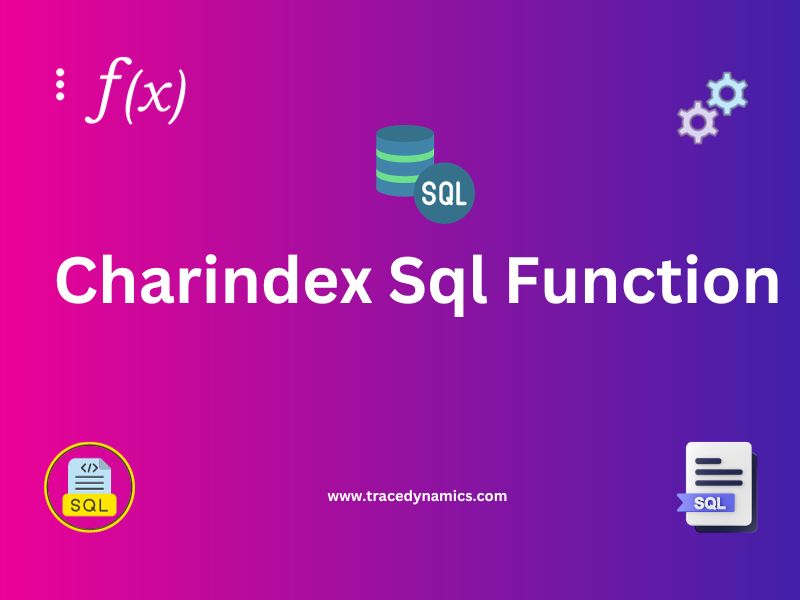Charindex Sql Function: SQL Server offers a variety of functions to assist developers in querying and manipulating data. Among these, the CHARINDEX SQL function stands out for its utility in string manipulation. It plays a crucial role in finding the position of a substring within a given string, thus aiding in data parsing and enhancing data retrieval processes.
- Key Takeaways:
- Master the syntax and parameters.
- Explore basic and advanced usage scenarios.
- Learn how to identify and avoid common mistakes.
- Delve into performance considerations and explore alternative functions.
Introduction to CHARINDEX SQL Function
Definition and Use Cases
In SQL operations, especially when dealing with string data, the CHARINDEX function emerges as a significant tool. It efficiently finds the starting position of a specified substring within a given string, returning the position of the first occurrence. This functionality proves indispensable in various real-world scenarios, such as data cleaning, data extraction, and pattern matching.
Importance in SQL operations
- Data Parsing: Identifying the position of specific characters or substrings is crucial for parsing string data.
- Pattern Matching: This function is useful in situations where recognizing patterns within string data is necessary.
- Data Extraction: It simplifies extracting specific data from larger text fields.
Syntax and Parameters of CHARINDEX SQL
Understanding the syntax and parameters of the CHARINDEX SQL function is the first step towards its effective utilization. Here is the generic syntax:
CHARINDEX ( substring, string, [start_position] )
Parameters Explanation
- substring: The substring to search for within the string.
- string: The string in which to search for the substring.
- start_position (optional): The position in the string where the search should begin.
| Parameter | Description |
|---|---|
| substring | The sequence of characters to search for. |
| string | The string within which to search. |
| start_position | (Optional) The position to start searching from. |
Basic Examples and Usage
Understanding the basic usage of the CHARINDEX function becomes straightforward with a few examples. Here, we demonstrate simple scenarios where CHARINDEX proves to be useful.
-- Example 1: Finding a substring within a string
SELECT CHARINDEX('SQL', 'Learning SQL Server');
-- Returns: 10
-- Example 2: Specifying a start position
SELECT CHARINDEX('SQL', 'Learning SQL Server', 11);
-- Returns: 0
Common Mistakes and Errors
Common Mistakes
- Ignoring Case-Sensitivity: Since the CHARINDEX function performs a case-insensitive search, overlooking this can lead to unexpected results.
- Overlooking Start Position: One should use the optional start position parameter cautiously, as it can alter the result.
Error Handling
- Incorrect Syntax: It’s crucial to ensure the correct syntax to avoid runtime errors.
- Non-Existent Substring: CHARINDEX returns 0 when the substring doesn’t exist within the string, which should be handled appropriately in your code.
Continuing from the basics, this part delves into the advanced usage of CHARINDEX, performance considerations, alternative functions, and video tutorials to help you better understand CHARINDEX. Additionally, it addresses frequently asked questions surrounding CHARINDEX functions to clarify common misconceptions.
Advanced Usage of CHARINDEX SQL
The CHARINDEX function goes beyond merely locating a substring within a string. It can be paired with other SQL functions to carry out complex string manipulations.
Using CHARINDEX with Other SQL Functions
- Combining with SUBSTRING: CHARINDEX can be used alongside SUBSTRING to extract a portion of text based on certain conditions.
- Utilizing with PATINDEX: Similar to CHARINDEX, PATINDEX can be used but it offers pattern matching, providing a level of flexibility.
Complex Examples
Here are some complex examples illustrating how CHARINDEX function can be used with other SQL functions:
-- Extracting domain from email
DECLARE @Email VARCHAR(100) = '[email protected]';
DECLARE @Domain VARCHAR(100);
SET @Domain = SUBSTRING(@Email, CHARINDEX('@', @Email) + 1, LEN(@Email));
SELECT @Domain; -- Output: example.com
Performance Considerations
Performance Impact
- Execution Time: Execution time could increase with larger strings or a higher number of records.
- Server Load: Heavy usage of CHARINDEX in SQL may lead to an increased server load.
Optimizing Queries using CHARINDEX
- Indexing: Proper indexing can help optimize queries using CHARINDEX.
- Avoiding Full Table Scans: Minimizing full table scans by filtering the data can also improve performance.
Alternatives to CHARINDEX Function
Exploring alternative functions that can be used in place of or along with CHARINDEX SQL:
- PATINDEX: This function allows pattern matching, which CHARINDEX in SQL does not support.
- POSITION: Similar to CHARINDEX, but follows a different syntax.
Frequently Asked Questions (FAQs)
What makes CHARINDEX SQL unique compared to other string functions?
CHARINDEX SQL is unique for its ability to locate a substring within a string, which is crucial for string manipulation tasks.
How can I optimize queries using CHARINDEX SQL?
Optimizing queries with CHARINDEX SQL involves proper indexing and avoiding full table scans wherever possible.
What are some common use cases for CHARINDEX SQL?
Common use cases include data parsing, pattern matching, and data extraction.
Are there any performance concerns with CHARINDEX SQL?
Yes, execution time and server load are two performance concerns with CHARINDEX SQL.
What are some alternatives to CHARINDEX SQL?
PATINDEX and POSITION are two notable alternatives to CHARINDEX SQL.

